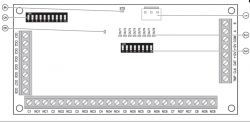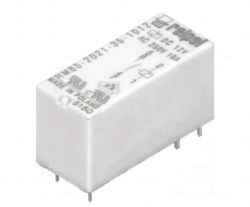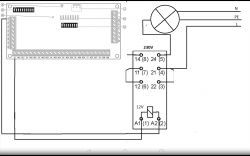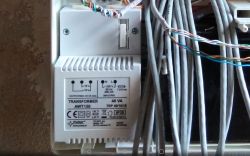I heard that INT-ORS do not like high starting powers and relays stick together.
If you ignore the warranty, can you easily replace the relay in INT-ORS using a soldering iron? What relays are installed there?
What will be better INT-ORS / IORS or INT-O and separate 12VDC / 230VAC 16A relays on rail sockets? The price of the relay and the socket is PLN 20-30, but it is easy to replace. I am also considering INT-ORS and additional relays only for riskier circuits.
I'm going to control:
- 230V LED lighting, simultaneously on one circuit, up to 20 IKEA 5-7W lamps with sin fi 0.6-0.9 and each with its own impulse power supply,
- dehumidifier with a few hundred W motor - here will be an external relay,
- heating devices - external relays / contactors,
It turns out that I can't use the built-in ORS relays too much and I don't need as many as eight outputs yet. So INT-O and external relays will be cheaper. It is easier to place the relay next to the device and pull the control cable than to multiply the number of circuits connected to the switchgear.
ORS, on the other hand, is a neat solution with additional controls that will show the current status of your devices.
If I knew what relay is inside it would make it easier to decide what to choose.
What are INT-ORS suitable for in terms of load capacity, and what is it better to use external ones?
If you ignore the warranty, can you easily replace the relay in INT-ORS using a soldering iron? What relays are installed there?
What will be better INT-ORS / IORS or INT-O and separate 12VDC / 230VAC 16A relays on rail sockets? The price of the relay and the socket is PLN 20-30, but it is easy to replace. I am also considering INT-ORS and additional relays only for riskier circuits.
I'm going to control:
- 230V LED lighting, simultaneously on one circuit, up to 20 IKEA 5-7W lamps with sin fi 0.6-0.9 and each with its own impulse power supply,
- dehumidifier with a few hundred W motor - here will be an external relay,
- heating devices - external relays / contactors,
It turns out that I can't use the built-in ORS relays too much and I don't need as many as eight outputs yet. So INT-O and external relays will be cheaper. It is easier to place the relay next to the device and pull the control cable than to multiply the number of circuits connected to the switchgear.
ORS, on the other hand, is a neat solution with additional controls that will show the current status of your devices.
If I knew what relay is inside it would make it easier to decide what to choose.
What are INT-ORS suitable for in terms of load capacity, and what is it better to use external ones?









